Here’s all you need to know on how to watch the Olive Ridley Turtles in their natural habitat in Odisha (Orissa) India if you are a nature lover looking for a perfect outdoor holiday.
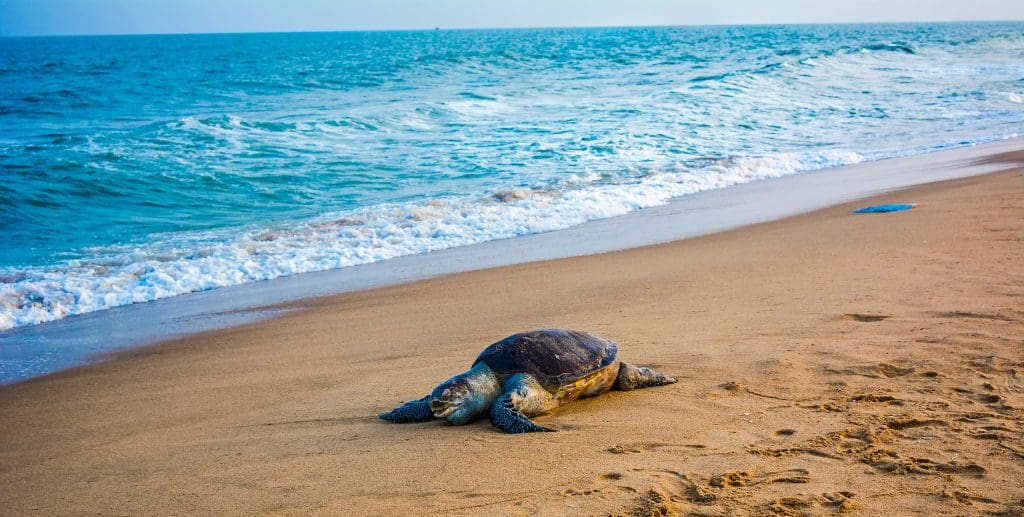
Odisha (Orissa) with its breathtakingly beautiful beaches is the perfect place for you to explore! Be mesmerised by the sea and experience the thrill of seeing Olive Ridley Turtles, one of the most endangered species in the world in their natural habitat.
These majestic creatures make their way back to Orissa’s shorelines every year during the monsoon season from May to October and draw flocks of travellers who love wildlife conservation and the great outdoors. From watching these incredible animals lay eggs at night to visiting nearby fishing villages; there are so many opportunities available here when you join guided tours or make your own way to see what this truly awe-inspiring destination has to offer.
The greatest breeding place is Odisha (India) – 100,000-500,000 turtles nest here each year
The greatest breeding place for these turtles is the Gahirmatha Beach in the Kendrapara district of Odisha (India), which is now a part of the Bhitarkanika Wildlife Sanctuary. The Gahirmatha Marine Wildlife Sanctuary was formed in September 1997 and encompasses Gahirmatha Beach and the length of the Bay of Bengal.
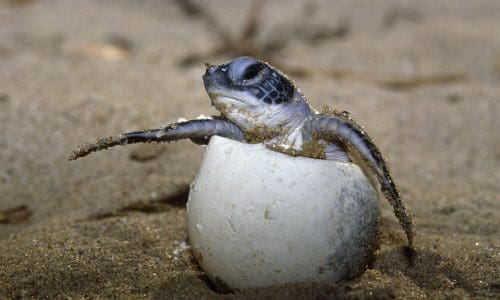
It is bound towards the east by the Bhitarkanika Wildlife Sanctuary. In 2002, the mangroves of Bhitarkanika were recognized as a Ramsar Wetland of International Importance.
Gahirmatha Beach is itself registered as a Ramsar site and is of special importance for the Olive Ridley turtles. This beach provides plenty of food, nesting grounds, and a safe environment for the turtles. The government of Odisha has taken special care to protect the Olive Ridley turtles, and Special Marine Turtle Protection Force (SMTPF) has been set up to monitor the beach and protect these turtles.
The SMTPF works in collaboration with local fishing communities, providing them with training and resources to ensure the safety of these endangered animals. Along with patrolling the beach, they are also responsible for rehabilitating turtles that have been injured.
The Olive Ridley turtles migrate to Odisha during the months of October-November and February-March, a period known as “Arribada”. During this time, thousands of these turtles come to lay their eggs on the beaches of Odisha. The government has identified five places where these turtles nest – Devi, Gahirmatha, Rushikulya, Bahuda and Astarang. The SMTPF, along with the local fishing community and other stakeholders, work together to protect these turtles during this time.
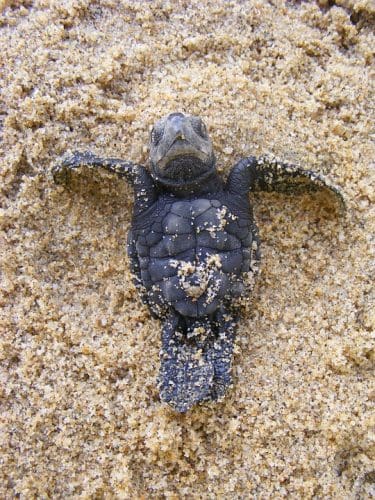
The government of Odisha has also taken steps to reduce plastic pollution in and around Gahirmatha Beach. This is because plastic bags and other items can be fatal for turtles, who can mistake them for food. By reducing the plastic waste in and around the beach, the government is doing its part to maintain a safe environment for these endangered animals and facilitate the Olive Ridley turtles’ breeding.
It is a sea turtle rookery and is the world’s biggest known rookery. Aside from the rookery at Gahirmatha, two further mass nesting beaches have been discovered near the mouths of the rivers Rushikulya and Devi.
Migration over hundreds of kilometres
Sea turtles’ favourite eating grounds might not have been the optimal breeding grounds. To reach both ends, sea turtles travel hundreds of kilometres. Olive ridley sea turtles have been recorded migrating from Sri Lanka’s coastal waters in the Indian Ocean to Gahirmatha’s coastal waters in the north.
Sea turtles can move over great distances without becoming lost in the expanse of the sea because of their ‘homing’ features and amazing ability to orient themselves in open water. They begin mating activities as soon as the ridley sea turtles arrive in Gahirmatha’s coastal waters. Males join females and are frequently spotted floating on top with their flippers moving in and out. Occasionally, more than one male might be seen mounting a female.
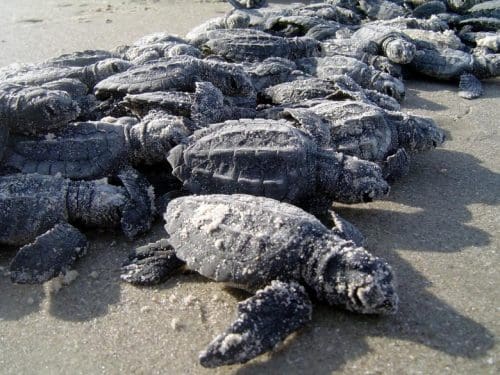
Until there is an external threat, the courting might go for hours. All throughout the breeding season, a female will mate with many males. The mating couples may usually be seen off the shore of Ekakula. Nesting “Arribada” refers to the mass nesting habit of olive ridley sea turtles. Hundreds of female turtles carrying eggs scramble on the Nasi – I & II islands’ nesting beach to discharge the eggs into flask-shaped holes.
Every year, from the beginning of November until the end of December, a large number of olive ridley sea turtles travel to the coast of Orissa to mate and lay their eggs. The yearly nesting population on the Gahirmatha seashore ranges from 100,000 to 500,000 turtles. Under normal circumstances, the incubation period lasts 45 to 51 days, although it can last up to 70 days in bad weather.
Only females are produced by eggs incubated at 31 to 32 °C, only males are produced by eggs housed at 28 °C or below, and a mixed-sex clutch is produced by eggs incubated at 29 to 30 °C. Due to shifting environmental circumstances and levels of nest predation, hatching success varies by beach and year.
Conservation of Olive Ridley turtles
The population of these turtles has been declining in recent years owing to mass mortality. The olive ridley sea turtle is protected by the Indian Wildlife (Protection) Act, 1972, and is classified on Schedule I. (amended 1991). The species is listed as threatened by the International Union for Conservation of Nature (IUCN). The ‘Migratory Species Convention’ and the Convention on International Trade in Wildlife Flora and Fauna both protect sea turtles (CITES). All of these conventions include India as a signatory.
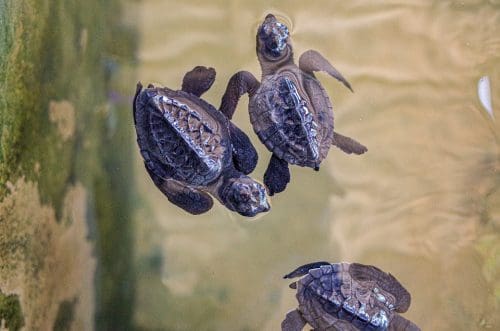
The ridley sea turtle’s homing traits make them more vulnerable to mass extinction. They are doomed by their journey to the natal nesting beaches.
The Gahirmatha coast is extremely important for turtle protection since it is the primary nesting place for millions of turtles.
The finding and international acknowledgement of the Gahirmatha rookery near the mouth of the Brahmani-Baitarani (Dhamra) River in 1974 marked the beginning of Olive Ridley turtle conservation in Odisha. The Devi River mouth, some 55 nautical miles south of Gahirmatha, was the site of a second mass nesting in 1981. A third mass nesting place was identified in 1994, 162 nautical miles to the south of Gahirmatha, in the Rushikulya river mouth.
Why are Olive Ridley turtles endangered? Human activities such as turtle-unfriendly fishing techniques, urbanization and exploitation of nesting beaches for ports and tourism centres pose major risks to the Olive Ridley’s migratory path, habitat, and nesting beaches. Despite the fact that international trading in these turtles and their goods is prohibited, they are nonetheless poached for their flesh, shell, and leather.
Though it is unlawful to capture turtle eggs, they have a sizable market in coastal areas. Despite the fact that international trading in these turtles and their goods is prohibited by CITES Appendix I, they are nonetheless widely poached for their flesh, shell, and leather, and their eggs, which are illegal to collect, have a major market in coastal areas. Adult turtles are accidentally killed by entanglement in trawl nets and gill nets owing to unregulated fishing on nesting beaches throughout their mating season, which is the greatest serious hazard to the Olive Ridleys.
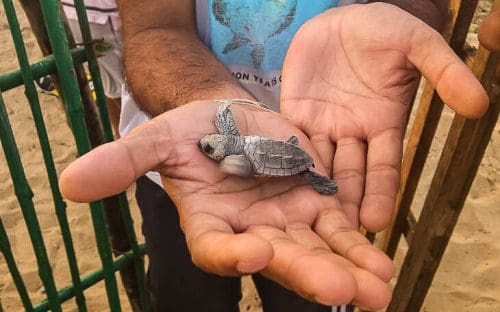
Conservation efforts include artificial hatcheries, beach cleaning campaigns, and a ban on trawling
The Orissa administration has formulated it essential for trawls to utilise Turtle Excluder Devices (TEDs), a net particularly built with an exit cover that allows turtles to leave while preserving the catch, to avoid unintentional death in India. Fishermen, on the other hand, have been outspoken in their opposition to TEDs, believing that they result in the loss of a significant portion of the catch as well as the turtle.
By performing research to evaluate the waste of catch through TEDs, WWF-India and its collaborators debunked this idea, finding that the loss was a very tiny fraction of the entire catch. This outcome, together with frequent talks with fishing communities, is gradually changing their thinking and encouraging the usage of TEDs, so supporting Olive ridley turtle conservation.
To protect the Olive Ridley turtles, concerted efforts have been undertaken by the local communities and NGOs in collaboration with the Forest Department. Various conservation initiatives have been taken up to protect the nesting grounds, create awareness amongst local fishermen and tourists, and reduce the mortality rate of hatchlings. Some of the conservation efforts include artificial hatcheries, beach cleaning campaigns, and a ban on trawling in the waters near the Gahirmatha beach.
The protection of the Olive Ridley turtles is essential as they are an important part of our ecosystem and a part of India’s rich biodiversity. It is our duty to ensure their conservation and secure the future of these amazing creatures.
The Olive Ridley Project was launched to save the Olive Ridley turtles from further decline. The project aims to research and monitor their nesting sites, protect their habitats and create awareness about the threats posed to them.
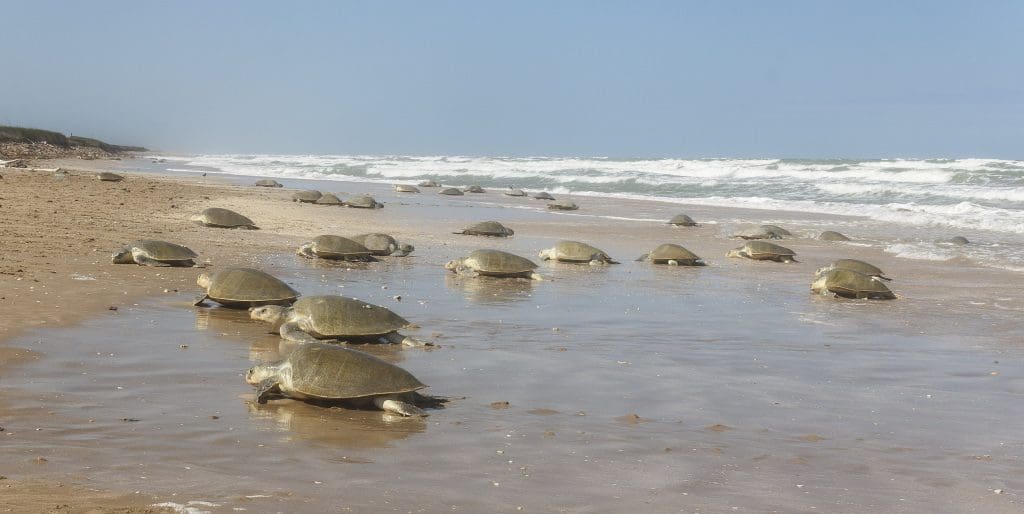
Little known facts about the Olive Ridley turtles in Gahirmatha Beach
Did you know that the Olive Ridley turtles are one of the smallest species of sea turtles? The Olive Ridley turtle size measures up to only 2 feet in length and weighs up to 100 pounds. To survive the winter, these turtles migrate from the smaller beaches in the Andaman Sea to Gahirmatha Beach, where they nest and lay their eggs.
In fact, Gahirmatha Beach is one of the largest nesting sites for Olive Ridley turtles in India. Every year, between October and May, millions of turtles come to the beach to nest. The eggs that they lay in the sand incubate for up to 2 months before hatching. Unfortunately, many of the eggs are taken by humans or destroyed by floods and other natural disasters.
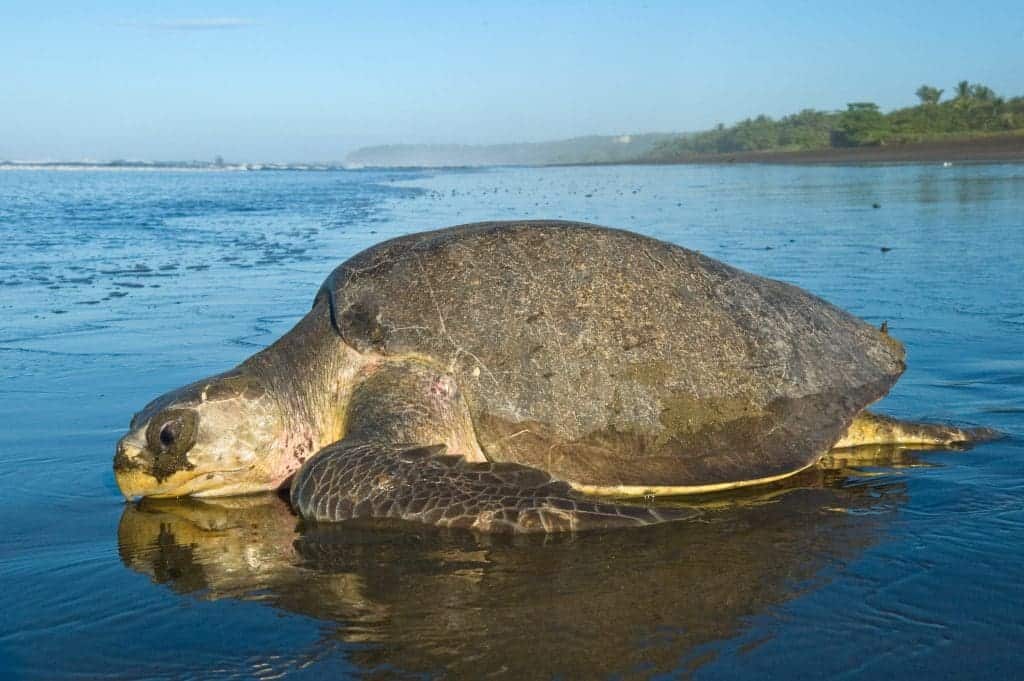
It is estimated that only 1 in 1,000 eggs survive to adulthood. The babies that do survive have to contend with predators such as crabs and birds as they make their way out to the ocean.
There are several species of Olive Ridley sea turtle, often called Pacific Ridley sea turtle, which belongs to the family Cheloniidae. The species is the tiniest and most numerous of all sea turtles found on the planet.
Warm and tropical seas, particularly in the Pacific and Indian Oceans, as well as in the warm waters of the Atlantic Ocean, are home to L. olivacea, which is the Olive Ridley turtle’s scientific name. The Olive ridley is named because of its olive-coloured carapace, which is heart-shaped and curved and grows to be around 2 feet long and 50 km in weight.
Males and females have the same size carapaces, although females have a little more rounded carapace than males. They are carnivores that eat jellyfish, shrimp, snails, crabs, mollusks, and various fish and their eggs. The turtles spend their whole lives in the water, travelling thousands of kilometres every year between feeding and breeding regions.
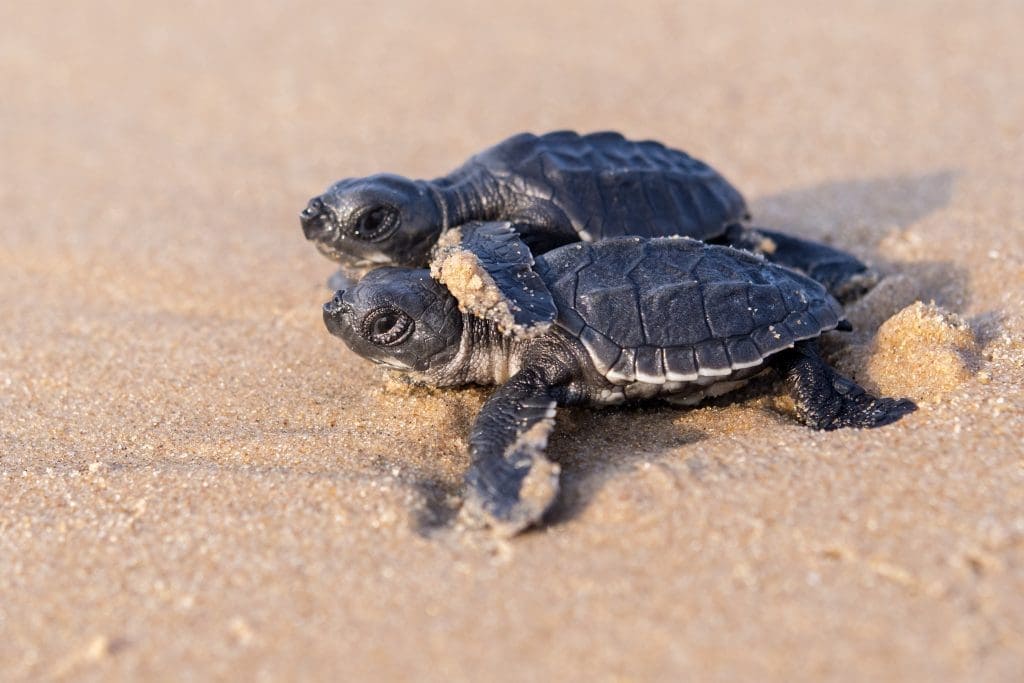
The Olive Ridley turtles are a protected species, and local authorities have taken steps to protect them from poachers and other threats.
They have installed fences and deployed personnel to patrol the beach and ensure that nesting turtles are not disturbed. Additionally, local organizations and volunteers have set up camps along the beach to help monitor and protect the turtles.
Despite these measures, the population of Olive Ridley turtles remains fragile at Gahirmatha Beach. This is due in part to the fact that their natural habitat is threatened by pollution, overfishing, and climate change. As a result, it is important for us to do our part to help protect these turtles and their habitat.
Where are Olive Ridley turtles found apart from Orissa in India?
Olive Ridley turtles are found along the coastlines of many countries in the Indian, Pacific, and Atlantic oceans.
These countries include Mexico, Costa Rica, Nicaragua, Honduras, Panama, Colombia, Ecuador, Peru, Brazil, Uruguay, Argentina, and Chile in the Atlantic Ocean; Bangladesh, Sri Lanka, Thailand, Malaysia, Indonesia, Vietnam, and the Philippines in the Pacific Ocean; and India (including Orissa), Pakistan and Oman in the Indian Ocean. In addition, Olive Ridley turtles have been recorded in the waters of Mauritius, Seychelles, and other small islands in the Indian Ocean.
Why is Orissa the biggest breeding ground for Olive Ridley turtles?
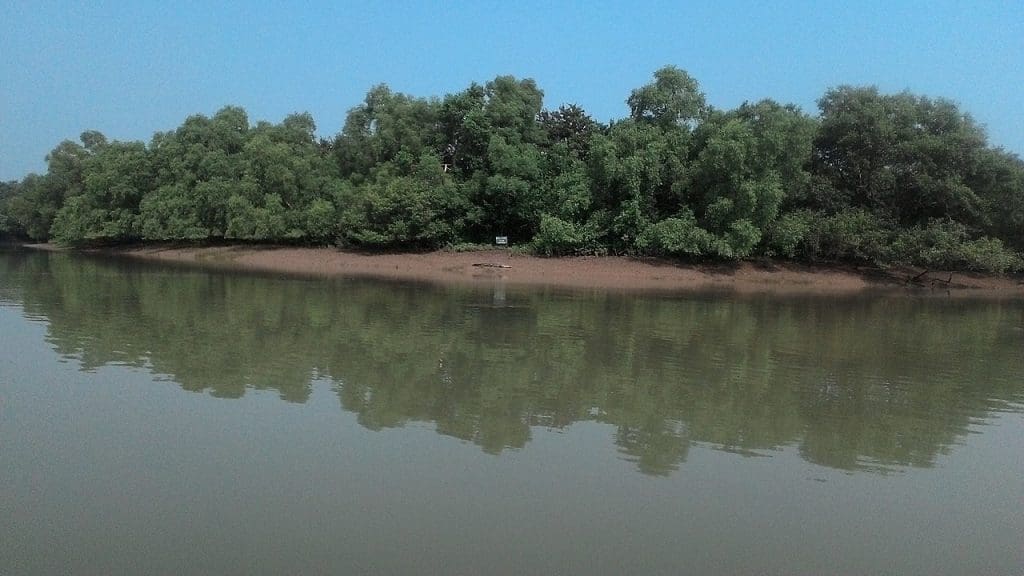
Orissa is one of the most important breeding grounds for Olive Ridley turtles in India due to its long coastline, warm waters, and a wide variety of prey. The area also experiences monsoon rains, which stimulate the turtles to move ashore and lay their eggs. Furthermore, many of the beaches in Orissa are relatively undisturbed, providing suitable nesting habitats for the turtles.
The Bhitarkanika National Park in Orissa is a designated reserve for Olive Ridley turtles, and the local communities actively work to protect these endangered species.
The Zoological Survey of India (ZSI) is undertaking a big tagging exercise of Olive Ridley sea turtles in collaboration with Odisha’s forest department for the conservation of this rare species of turtle. The tagging program along the Odisha coast was started in January 2021 and 8,450 turtles including 188 mating pairs, (8,252 female and 198 male turtles) have been tagged to date.
In one of the latest surveys a record number of over 5,50, 317 Ridley turtles laid eggs on a 4-km-long beach stretch from Bateswar to Gokharakuda during an eight-day mass nesting that took place from March 27 – March 4, 2022.
The best time to visit
- Where to watch them – Olive-Ridley turtles may be found in Rushikulya and Rambha (Chilika).
- Season/Best time – The best time to see them is around the end of January.
Be a responsible traveller: what you should not do
- You should not pollute the area as a responsible tourist.
- You should keep a safe distance from the turtles.
- Don’t engage in any aquatic activity that might endanger the turtles.
Read More: Latest



